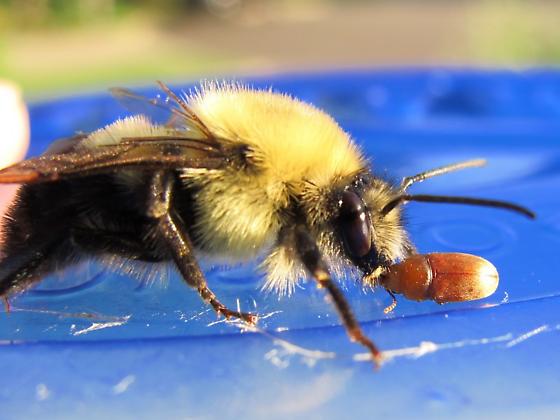by Pat McShea
You probably remember some version of this graphic: simple line drawings linked by arrows to chart energy flow through an ecosystem featuring the Sun, a patch of grass, a rabbit, and a hawk or fox. During the closing minutes of a recent day-long educator workshop about biodiversity at Carnegie Museum of Natural History, two participating middle school teachers cited the pervasive textbook illustration as an educational prop they now felt comfortable moving beyond.
Natalie Miles and Christian Shane, science teachers at North Allegheny School District’s Ingomar Middle School, expressed confidence that the seventh graders they work with would benefit from guided firsthand explorations of more complex energy flows involving various plant and invertebrate interactions. “We already teach about pollination,” explained Christian, “and with this information we can guide students on investigations right where they live.” After endorsing Christian’s comments, Natalie added a more personal note. “You’ve kept my nerdy science self fully engaged today. Thank you.”
The core experience that so captivated the pair was a carefully prepared slide presentation by museum scientist Dr. Ainsley Seago. Because the Associate Curator of Invertebrate Zoology likened her session to a sales pitch for insects, she began with what could be termed product information specific to the museum: The CMNH collection consists of approximately 16 million pinned insect specimens, representing locations all over the world, and spanning 150 years of collecting; Moths (Lepidoptera), beetles (Coleoptera), and fleas (Siphonaptera), are collection strengths, but the wide-ranging research resource also includes many groups of non-insect invertebrates.
The ubiquity of insects and the increasing ease and accuracy of their identification through hand-held technology such as the iNaturalist smartphone app were the next topics on Ainsley’s presentation agenda. Then her core material was setup by a reminder of two different but potentially connected circumstances: 1) Pollinators and bee declines are hot topics right now. 2)Teachers of some grades and subjects need to cover ecosystems according to the PA science standards.

What followed was refresher session on the biomechanics of pollination that moved seamlessly into enthusiastic introductions for a cast of a dozen insect and other invertebrate characters that might visit, or even inhabit, the blossom of a common wild sunflower on a late summer or early fall day. Some creatures arrived in search of pollen or nectar, others to be in the proper place to ambush and prey upon such visitors, and the most memorable, a tiny fungus beetle whose most supportive micro-habitat is the decaying detritus within bumble bee nests, to temporarily attach itself to that insect’s tongue, and hitch a ride to a new home.
Besides offering her audience alternatives to organisms favored by many textbooks, Ainsley aptly displayed what the late Dr. John Rawlins, Curator Emeritus for the museum’s Section of Invertebrate Zoology termed “bug love.” As I watched the performance from my seat as an observer in the back of the workshop classroom, I recalled something historian David McCullough wrote about Dr. Margaret B. McFarland, the University of Pittsburgh child psychologist who was a strong influencer of Fred Rogers television programs for young audiences. “What she taught, in essence, is that attitudes aren’t taught, they’re caught. If the attitude of the teacher toward the material is positive, enthusiastic, committed, and excited, the students get that.” Such transmission of attitudes also applies to older audiences.
For information about the next scheduled educator workshop, please visit our Events page.
Related Content
Educator Spotlight: Christian Shane
Learning From Misinterpretations
Two Perspectives on Attending a Course on Moths and Butterflies in the Southwest
Carnegie Museum of Natural History Blog Citation Information
Blog author: McShea, PatrickPublication date: February 3, 2023
